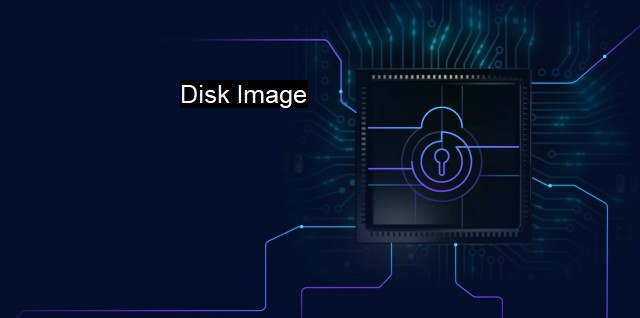What is Disk Image?
The Importance of Disk Imaging in Cyber Security and Antivirus: Comprehensive Backup, Easy Recovery, and More
A "disk image" functions as a digital duplicate or representation of a computer's hard drive or other storage devices. The concept of disk imaging is critical in the security domain as it aids in the preservation and recovery of data.A disk image is a byte-by-byte replication of the hard drive, creating an exact mirror, including the information necessary to boot to the operating system. It encapsulates all data files, applications, and structures necessary for the operation of the system. This includes the boot sector, the file allocation table, and individual files and directories, virtually packaging the exact binary contents from the original source in a single file or set thereof.
Disk imaging is pivotal for a robust cybersecurity posture. The ability to clone an entire system, including those hidden sectors that may otherwise go unnoticed, allows for a comprehensive security solution. It enables the user to restore the system to the image's preexisting state should any system failure or malware attack take place in a rapid and efficient manner. it fosters quicker recovery times as opposed to reloading an operating system application by application during a data breach event.
In the world of cybersecurity and antivirus protection measures, disk images can be utilized as safety backups of critical systems. Disk imagining allows for the freezing of the system's state at a specified point in time, allowing for a rollback following a breach or data loss scenario. This enables the replication of configurations across multiple systems, supporting swift disaster recovery in the wake of a potential cyber threat.
Because of the replication of an exact binary copy, disk imaging also does well to expose rootkits and other complex malwares which often reside within the hidden sectors of the disk. These malicious software tools can go undetected with traditional antivirus scanning techniques, given their ability to mimic regular files and processes. Hence, disk imaging is a valuable tool in the arsenal for penetrating deep-rooted security threats.
Disk images can also assist in forensics analysis, another crucial arm in cybersecurity. Given that the disk image preserves not only the files but also the metadata that informs when, where, and how the data was created, it is significantly beneficial for tracing back malware, spotting user activities and understanding attack vectors and patterns.
While disk imaging is a powerful tool, it does need to be implemented wisely. To have a truly effective restore capability, disk images must be made regularly and kept current. given their holistic and highly detailed nature, disk images require considerable storage space, computing power, and potentially, network bandwidth.
As a disk image takes a snapshot of the entire system, it also ends up copying any flaws or security vulnerabilities present at the time of the creation of said image. Therefore, while harnessing their potential in data preservation and recovery, it becomes important to have measures in place that can sanitize these images against unnecessary risk exposure.
Disk imaging functions as an integral practice in the cybersecurity landscape. Acting as both a tool for data security, rapid recovery and providing a basis for robust forensics investigations, it encompasses more than just cloning a system. It acknowledges and allows for a comprehensive level of analysis, taking into account the increasingly complex nature of modern malware and cyberattacks. Adopting disk-imaging practices supplements a more robust defense against budding cybersecurity threats and is an investment into preparing for the unanticipated.

Disk Image FAQs
What is a disk image?
A disk image is a copy of an entire storage device, such as a hard drive or a USB flash drive, that includes all of its contents and structure. Disk images are commonly used in cybersecurity and antivirus applications to make backup copies of data or to analyze and investigate malware.What is the purpose of creating a disk image in cybersecurity?
There are several purposes for creating a disk image in cybersecurity, such as making a complete backup of a system or storage device, simplifying the process of restoring data in the event of a cyberattack, and providing forensic investigators with a complete copy of a compromised system for analysis.What are some best practices for creating disk images for cybersecurity purposes?
Some best practices for creating disk images for cybersecurity purposes include verifying that the source and target storage devices are free from malware, creating a hash value for the disk image to ensure its integrity, storing the disk image on a separate, secure storage device, and encrypting the disk image to protect its contents from unauthorized access.What are some common file formats used for disk images in cybersecurity?
There are several common file formats used for disk images in cybersecurity, such as ISO, IMG, and VHD. ISO is a widely used format for archiving and distributing digital media, while IMG is commonly used for disk images created from floppy or optical disks. VHD is a newer format that is frequently used in virtualization environments to store virtual machine disks.| | A | | | B | | | C | | | D | | | E | | | F | | | G | | | H | | | I | | | J | | | K | | | L | | | M | |
| | N | | | O | | | P | | | Q | | | R | | | S | | | T | | | U | | | V | | | W | | | X | | | Y | | | Z | |
| | 1 | | | 2 | | | 3 | | | 4 | | | 7 | | | 8 | | |||||||